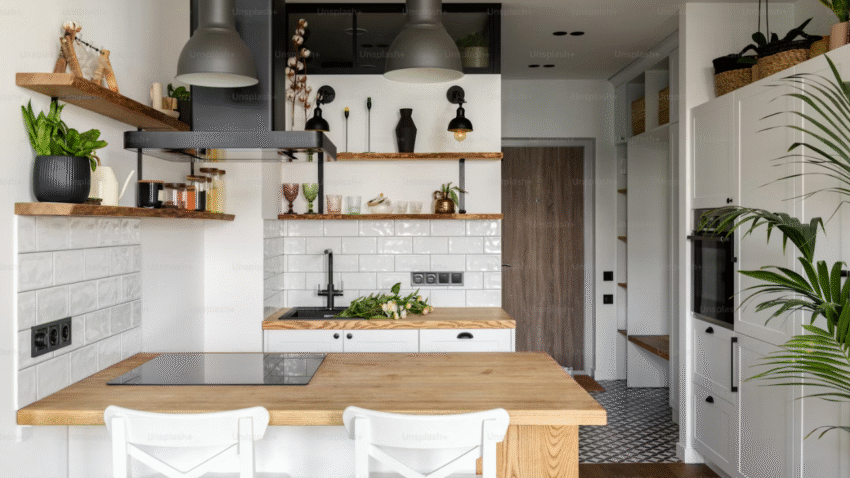Introduction
Do you ever open the fridge or freezer and wonder, “How old is this?” Labeling and dating food containers might seem like a small task, but it plays a big role in food safety, organization, and reducing waste. In this guide, you’ll learn how to label and date your food containers effectively, so you always know what’s in your kitchen and how fresh it is. With the right system, you’ll avoid spoiled meals, simplify meal planning, and keep your kitchen running smoothly.
Why Labeling and Dating Food Matters in the Kitchen
Properly labeling and dating food isn’t just about staying organized—it’s a key part of food safety and smart kitchen management. Here’s why it matters:
- Prevents foodborne illness by helping you track freshness
- Reduces food waste by reminding you to use items before they spoil
- Simplifies meal prep by making it easier to find ingredients and leftovers
- Supports FIFO rotation (First In, First Out), especially in fridges and freezers
- Saves time by eliminating the guesswork of “what’s in this container?”
Whether you’re meal prepping, storing leftovers, or freezing future dinners, labeling helps your kitchen stay efficient and safe.
Step-by-Step Guide to Labeling and Dating Food Containers
Follow this simple process to keep your containers properly marked and easy to manage.
1. Choose the Right Containers
Before you label anything, make sure you’re using proper storage containers:
- Clear containers are best for visibility
- Glass or BPA-free plastic is ideal for safety and reusability
- Stackable shapes save space in the fridge or freezer
- Containers should have a flat surface for labeling
Kitchen Tip: Invest in containers with matching lids to prevent the classic “missing top” problem.
2. Use Consistent Labeling Supplies
To create a reliable and easy-to-read system, choose tools that stick and last:
Labeling tools:
- Masking tape or freezer tape (sticks even in cold temps)
- Permanent marker (fine-tip for small writing)
- Pre-made labels or dry-erase labels (great for reusable containers)
- Chalkboard stickers for a stylish, reusable option
Reminder: Avoid regular paper tape—it often peels off in the fridge or freezer.
3. What to Include on the Label
Every label should include at least the name of the food and the date it was stored. Depending on your needs, you may also want to add:
- Cooking date
- Use-by or expiration date
- Heating instructions (if pre-cooked)
- Number of servings or ingredients (helpful for meal prep)
Example:
“Chicken Curry — Cooked 9/6 — Use By 12/6 — 2 servings”
Pro Tip: Use shorthand that works for you, such as “FR” for freezer or “L/O” for leftover.
4. Label Before You Store
Always label your container before it goes into the fridge or freezer. It’s easy to forget later or confuse similar-looking meals.
- Write your label while the food is cooling
- Apply the label to a dry, clean part of the container
- Place labels on the front or lid—whichever will be most visible in storage
Kitchen Tip: Apply freezer labels after sealing the container, not before, to avoid smudging or covering important parts.
5. Use a Color-Coding System (Optional)
Color coding can be a great visual aid if you manage a lot of containers.
Try this simple system:
- Red: Cooked meats
- Blue: Seafood
- Green: Vegetables and fruits
- Yellow: Grains, pasta, or starches
- Orange: Ready-to-eat meals
- White or black: Miscellaneous or pantry items
Note: Use colored tape or markers, or buy colored label stickers online.
Common Mistakes to Avoid
Avoid these labeling blunders to keep your system clean and effective:
Mistake 1: Using Labels That Fall Off
Solution: Use masking tape, freezer tape, or waterproof labels designed for food storage.
Mistake 2: Forgetting the Date
Solution: Always include the storage or cooking date. This is critical for tracking freshness and safety.
Mistake 3: Illegible Handwriting
Solution: Write clearly and use a fine-tip marker. If others in the household need to read it, clarity matters.
Mistake 4: Placing Labels in Hard-to-See Spots
Solution: Position labels where they are visible without lifting or opening the container.
Mistake 5: Skipping the Label on “Obvious” Items
Solution: Label everything. Even if something seems obvious now, it might not be in a few days.
Extra Tips & Kitchen Hacks
Enhance your food labeling routine with these helpful ideas:
Tip 1: Create a Labeling Station
Keep labeling tools like tape, markers, and blank labels in one drawer or basket near your food storage area for easy access.
Tip 2: Use Dry-Erase or Chalk Labels for Reusability
These are perfect for containers you use weekly. Just wipe and relabel as needed.
Tip 3: Track Leftovers with a Fridge Whiteboard
List what’s inside your fridge or freezer with the date it was stored. It’s a great visual reminder to use things before they go bad.
Next Task: Now that your containers are labeled and dated, learn how to organize your fridge and pantry for even better efficiency.
Conclusion
Labeling and dating your food containers is a simple habit with big benefits. It supports food safety, prevents waste, and saves you time and money. By choosing the right materials, writing clear and complete labels, and applying them before storage, you’ll never have to play the guessing game again. Add in a few kitchen hacks, and you’ll have a food storage system that works like a pro’s.
Bookmark this guide to stay on top of your food labeling routine every week!
